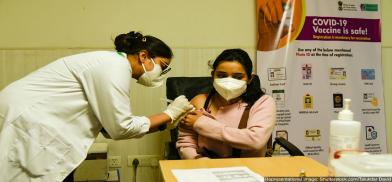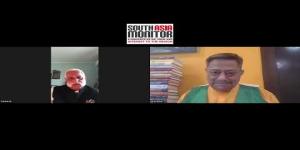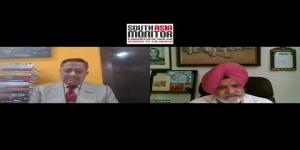India needs to package the idea of getting vaccinated as a national duty to defeat Covid
A proposed solution would be a multi-sectoral approach involving various stakeholders including the state governments, civil society and private sectors, as also the religious sectors that influence the beliefs of individuals, writes Abhinav Mehrotra for South Asia Monitor

With the central government deciding to retake charge of the Covid-19 vaccination drive from June 21, 2021, by procuring 75 percent of the vaccines produced in the country and distributing these for free to the states, there were expectations that the process will receive the necessary impetus. However, this has not happened with the rate of vaccination going down largely because of a shortage of jabs. In this context, one may ponder whether the overall vaccination strategy needs a rejig to truly become an "utsav" (festival) as Prime Minister Narendra Modi envisaged in April.
Against this backdrop, the need for a more effective vaccine communication strategy may be looked into. India’s Ministry of Health and Family Welfare came out with a Covid-19 Vaccine Communication Strategy report. It focused on advocacy efforts to engage the maximum number of people by promoting the benefits of vaccines and supporting the building of a safe environment and social mobilization plan to address the issues of vaccine eagerness and vaccine hesitancy.
In opposition to the stated objectives, Lancet Covid-19 Commission India Task Force had come out with a report about several cases of post-vaccine infections in various parts of the country.
The report caused growing anxieties among the masses about vaccines. In the past, the polio campaigns had faced similar issues as vaccine acceptance by different communities was threatened by anti-vaccination movements, conspiracy theories, miscommunication, religious dogma and rumors.
Vaccine hesitancy
Historically, the uncertainties surrounding the risk of infections post-vaccination originated during the 2009 influenza A (H1N1pdm09) pandemic when it was found through research in Canada that seasonal influenza vaccine had increased the risk of 2009 pandemic influenza A virus infection.
What needs to be understood is that the whole vaccination campaign has to be presented in a way that reassures people and addresses their concerns and most importantly normalizes vaccination.
One such example during the ongoing pandemic can be France, where getting vaccinated is associated with social incentives like getting to meet your loved ones once you are completely inoculated. While adapting it to our context requires being culturally appropriate, the essence is to reflect on the positive side of getting vaccinated.
Polio eradication success
Inspiration could also be drawn from the success of the polio eradication program that came into being through the collaboration between the World Health Organisation, United Nations Children's Fund (UNICEF) and the Rotary Foundation to eliminate all cases of polio infection around the world.
At that time, polio was endemic in India. It was the former Union Minister of Health and Family Welfare Dr.Harsh Vardhan who led the effort on behalf of the Delhi government as its health minister and initiated the large scale supplementary immunization campaign with Oral Polio Vaccine (OPV) in 1994, which was followed by the launch of Pulse Polio immunization campaign with the tagline ‘Do Boond Zindagi Ki’ (two drops of life) on 2nd October 1994.
Subsequently, it engaged celebrities like Amitabh Bachchan, Shah Rukh Khan, AR Rahman, Jaya Bachchan and Aishwarya Rai Bachchan and Sachin Tendulkar through emotional and action-oriented advertisements.
The campaign was carried out by using mass media like newspapers and radio announcements. The most striking feature of the campaign was the spirit with which individuals from all sections of the society came out and volunteered to prevent the spread of the disease. This ultimately led to India being declared polio-free by the WHO in 2014.
The success of this campaign is further supplemented through a study carried out on communication and health. According to it as the campaign gradually moved towards success, various posters, advertisements, and pamphlets were launched which showed the joy of those parents who gave polio drops to their children.
Staggering violations
On the other hand, when we talk about the Covid-19 pandemic, there are staggering violations of the lockdowns and the day-to-day safety measures like wearing masks and maintaining social distance.
A proposed solution would be a multi-sectoral approach involving various stakeholders, including the state governments, civil society and private sectors, and the religious sectors that influence individuals' beliefs. By adopting such an approach, both the state and central governments can make use of the knowledge, expertise, reach and resources of these sectors and establish public trust in vaccines.
What remains to be seen is whether an effort can be made to put forth the idea of getting vaccinated as a national duty as it is the only means of coming out of the ongoing pandemic.
(The writer is a lecturer at O.P. Jindal Global University, Sonipat, India. The views expressed are personal. He can be contacted at amehrotra@jgu.edu.in)










Post a Comment